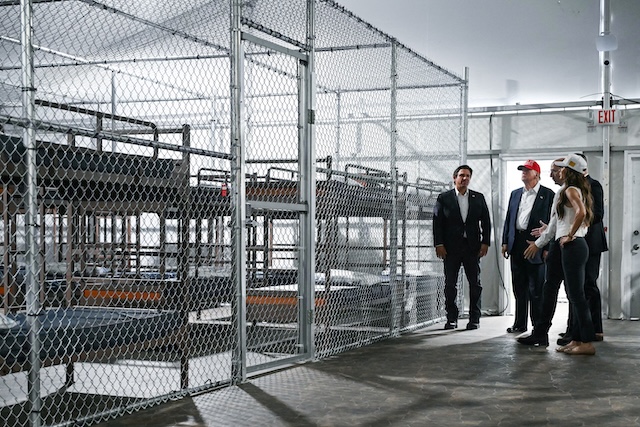Commentary: There’s hope for pruning federal regulations, some state experiments are paying off
Published 7:57 am Monday, August 4, 2025

- New construction, finished homes and models stand in the Northlake planned community, located near Sacramento International Airport in the far northwest tip of the city, in 2023. (Xavier Mascarenas/The Sacramento Bee/TNS)
President Donald Trump’s One Big Beautiful Bill Act includes $100 million for the Office of Management and Budget “to pay expenses associated with improving regulatory processes and analyzing and reviewing rules.”
Following the Department of Government Efficiency initiative, this small investment won’t make many headlines — but it should. If that money is put to use in the way several states have done to reduce built-up red tape, the return on investment will make even the crankiest budget hawk crack a smile.
A recent Council of Economic Advisers report found that just a modest portion of the president’s deregulatory agenda could save the nation some $907 billion. Take housing, for example. California’s thriving economy and broad appeal are a recipe for expensive homes, but its famously stringent building and other restrictions create something else: enough scarcity to propel home prices to around 2.5 times the national median. The costs extend further than the sticker price. They make it harder to rebuild after a natural disaster. They send workers and employers fleeing for other states or far-flung areas. They keep young people from finding their way to Westwood, Berkeley or Silicon Valley for better futures.
Trending
All of this adds up, and it’s about more than a handful of “good” or “bad” regulations. It’s about moving too slowly to streamline an entire system that fails millions of people. Federal officials now have resources and a mandate to identify failures in the federal code — the question is “how?”
The answer is taking shape. Federal officials can look at a specific playbook that’s getting results in nearby Richmond, Virginia. Shortly after taking office in 2022, Virginia Gov. Glenn Youngkin issued an executive order setting the ambitious goal of cutting regulatory requirements by 25% by the end of his term. As of last month, his administration has hit the target, and Virginia’s Office of Regulatory Management anticipates cutting nearly 33% — and 50% of the words in related guidance documents — by the end of his term.
These numbers are not smoke and mirrors or budgeting gimmicks. Virginia painstakingly and comprehensively inventoried its regulations, including third-party standards that are referenced (which therefore become regulations, too) and guidance documents. Every change has been meticulously and transparently cataloged on the state’s regulatory town hall website.
And what’s the return on investment? So far, it’s saving Virginia businesses and citizens more than $1.2 billion per year.
From reducing the number of training hours required to earn a living as a licensed cosmetologist to streamlining housing regulations (estimated to shave $24,000 off the construction cost of a new house and enable construction professionals to work much faster), working people are coming out ahead.
Virginia is showing Washington that substantial regulatory reform can be accomplished on a shoestring budget. The office that was stood up to oversee the reforms — the Office of Regulatory Management — consists of only four dedicated employees: a director, a deputy director and two policy analysts. Going forward, artificial intelligence will further reduce the costs of cataloguing and processing untold amounts of regulatory requirements.
Trending
For example, the algorithm might flag that Virginia requires professional masseurs to undergo 500 hours of training, while the least restrictive state requires only 300 hours. Absent evidence that the other state produces subpar or unsafe practitioners, Virginia officials might decide the 500-hour requirement is too strict.
Of course, a state may have a perfectly legitimate reason to impose stricter regulatory restrictions than others. That’s why the algorithm merely creates a “heat map” to start the process of identifying onerous burdens. By producing the necessary analysis in a matter of seconds, it allows officials to focus on applying human insight and judgment.
Led by Gov. Greg Abbott, Texas officials — noting my findings that their state is America’s fifth-most-regulated and could see a half-trillion-dollar economic boost with its own deregulation effort — are now taking a similar approach to Virginia’s.
Imagine if the federal government were to implement similar technology. Gone would be the days of regulations from different agencies contradicting each other or outdated rules remaining on the books because humans haven’t had the time to update them.
Patrick A. McLaughlin, a research fellow at the Hoover Institution, created the RegData and QuantGov projects, which quantify regulations using data-science tools and have informed reforms in several states.








